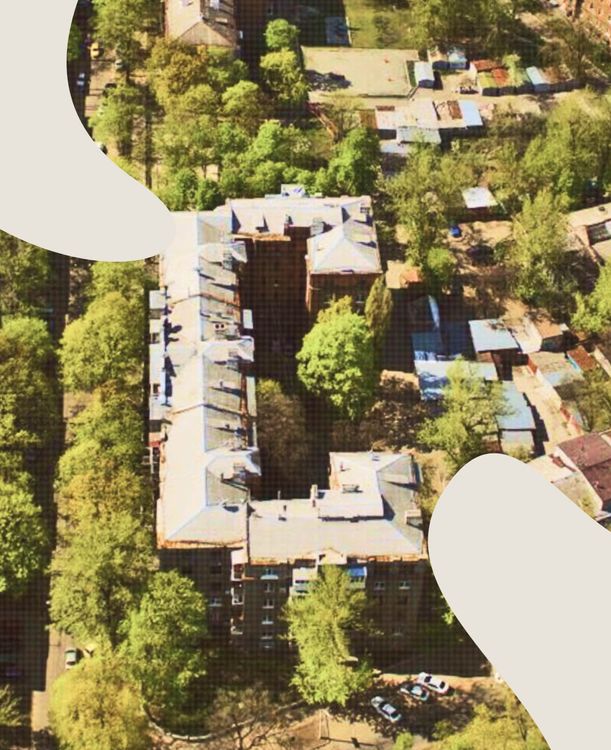Chornobyl Disaster

The largest man-made disaster has occurred in Kyiv region and continues to impact the world.
1986
Fonts:
Shtozer (800 expanded)
Designer:
The residents of the town of Prypiat were the first to witness the true power of the “peaceful atom,” and soon, the effects of radiation reached across all of Europe. That night, 50 million curies of radioactive substances were released into the air.
Despite such figures, no one rushed to save people in the first days of the catastrophe.

The firefighters who arrived first at the scene did not even have special protection gear. They were not warned that it was not just a fire at the nuclear power plant but that the reactor was completely destroyed. For the majority of emergency responders, the call to the Chernobyl Nuclear Power Plant resulted in tragic outcomes over the following days. It was only on May 10 that they managed to successfully extinguish the fire inside power block No.4, after most of the graphite had burned out.
The winds carried the airborne contaminants from the Chornobyl Nuclear Power Plant across Belarus and Lithuania, reaching as far as Sweden and Finland and spreading across Europe.
Sweden was the first to react to the increased level of radiation in the air and demanded explanations from the Soviet government. Concealing the accident became increasingly difficult, yet the Soviet authorities continued to do so until the very end.

While a radioactive cloud raged over the Kyiv region, the Communist Party organized large-scale May Day demonstrations. As a result, the city’s hospitals overflowed with people suffering from acute radiation syndrome. Overall, nearly five million people were affected by the Chornobyl disaster, and over 5,000 towns and villages in Belarus, Ukraine, and Russia were contaminated with radioactive nuclides. However, speaking about the disaster was strictly prohibited. Any information leak about Chornobyl was considered slander by the KGB. Only on May 3 did the evacuation of the first affected individuals start, and their diagnoses were kept strictly confidential. Foreign journalists attempting to report on these events faced persecution.
The Chornobyl disaster, with its cumulative consequences, became the largest human-made catastrophe in human history.

Ukraine suffered significant losses to its natural and economic potential, inheriting the devastated Chornobyl Nuclear Power Plant from the USSR.
Together with the international community, Ukraine had to find solutions to new security challenges. The need arose to replace the so-called “sarcophagus” covering the reactor and build a new storage facility for spent nuclear fuel. Years of dedicated work and millions of dollars in investments were necessary to ensure the ongoing operation of the nuclear power plant and address the aftermath, efforts that continue to this very day.

37 years after the Chornobyl tragedy, radiation safety remains a pressing concern once again. During the three weeks of Russian army occupation, the plant’s operations were disrupted. The occupiers looted equipment and household appliances, damaged buildings, and even mined the area before leaving.
There exists a risk of a disaster again, but this time in a different region of the country. Russian forces are blackmailing the world with the threat of undermining the Zaporizhia Nuclear Power Plant, the largest in Europe and the third in the world for its capacity. Ukrainians, on the other hand, hope that the international community will not allow a “second Chornobyl” to occur, as its consequences would reverberate for many years to come.
Fonts:
Shtozer (800 expanded)
Details:
Chornobyl Disaster
Designer:
About font:
Next letter and event

Chornobyl Disaster
this project
in social
“Shchedryk” (The Little Swallow)


Zhyvyi lantsiuh (Human chain for the 71st anniversary of the Act Zluky)

Kvitka Cisyk (Kasey Cisyk)

Yrii (/'irij/: iriy), yndyk (/in'dik/: turkey) and yrod (/'irod/: Herod)

1991 Ukrainian Independence Referendum


Falz-Fein and his “Askania Nova”

Peresopnytske Yevanheliie (The Peresopnytsia Gospel)

Chornobyl Disaster


Shliakh iz variah u hreky (Route from the Varangians to the Greeks)

1991 Ukrainian Independence Referendum

Zaporizka Sich (The Zaporizhian Host)

Peresopnytske Yevanheliie (The Peresopnytsia Gospel)

“Shchedryk” (The Little Swallow)

Lisova Pisnia (The Forest Song)

“Yoi, nai bude!” (Ah, let it be!)

Creative & Tech Online Institute
Медіа про дизайн, креатив і тех індустрії

Ukrainski sichovi striltsi (The Ukrainian Sich Riflemen, or the USS)

Georgiy Gongadze

Orlyk’s Constitution


Falz-Fein and his “Askania Nova”

Yrii (/'irij/: iriy), yndyk (/in'dik/: turkey) and yrod (/'irod/: Herod)

Holodomor

Lisova Pisnia (The Forest Song)

Ivan Franko

Crimean Tatars, Karaites and Krymchaks (qırımlılar, qaraylar)

Antonov AN-225 Mriya ("The Dream")

Peresopnytske Yevanheliie (The Peresopnytsia Gospel)

Zaporizka Sich (The Zaporizhian Host)

Budynok “Slovo” (The Slovo Building, or "The Word")


“Nasha armiia, nashi khranyteli” (“Our Army, Our Guardians”)

Mariupol



